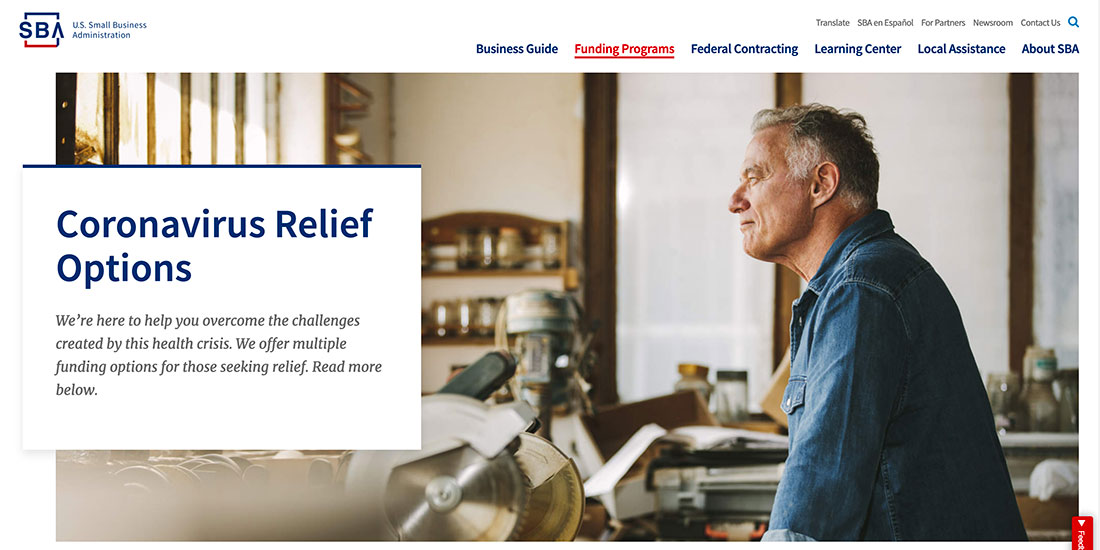
03 Jul PPP and EIDL Updates: Increased Financial Resources for Small Businesses and Freelancers
Congress has passed two bills which will make it much easier for small businesses and freelancers to apply for PPP loans and to achieve loan forgiveness. On June 5th, the Paycheck Protection Program Flexibility Act (PPFA) was signed into law. Its main goals are to reduce the amount of the loan that must be applied to payroll and to extend the covered period to receive loan forgiveness. On June 30th, Congress passed a second bill which extends the application period for PPP loans to August 8th. In addition, the SBA’s Economic Injury Disaster Loan program (EIDL) has been reopened for small businesses, sole proprietors, and freelancers.
Extension of the Application Period
S. 4116 was passed by unanimous vote in the Senate on June 30th, accepted by the House on July 1st, and sent to the President for signing on July 2nd. It’s expected that the bill will be signed and enacted. The application period for PPP loans was set to end on June 30th. However, with about $130 billion still left in the program coffers, and with more states rolling back business reopenings due to surges in COVID infections, it was clear that more small businesses would need to avail themselves of PPP loans. The bill extends the application period to August 8th.
The PPFA Provisions
PPFA includes several provisions which will make it easier for small businesses and freelancers to achieve 100% loan forgiveness. First, the percentage of the loan which borrowers need to apply to payroll has been reduced from 75% to 60%. This reduction of the payroll requirement addresses concerns raised by small businesses struggling to pay employees while their businesses remained shuttered and expenses continued to mount. Secondly, the length of covered time for loan forgiveness was extended from eight weeks to 24 weeks or the end of the year (whichever comes first). This means borrowers have until December 31, 2020, to rehire workers.
PPFA also increases the cap on loan forgiveness for sole proprietors and freelancers from $15,833 to $20,833. This enables them to spend the full amount on payroll during the 24-week period, rather trying to spend down the $5,000 difference during a period when their other expenses, due to public health measures, may be minimal.
Other provisions of the bill:
- The repayment period for PPP loans which are not forgiven for new borrowers is extended from two to five years. (If you already have a PPP loan, you don’t get that extension.)
- An earlier provision which penalized businesses that cannot maintain their pre-pandemic workforce was removed, and safe harbors for businesses that made good-faith efforts to maintain their workforce, but were unsuccessful, were codified.
- Payments on principal, interest, and fees are deferred until after the lender and the SBA determine whether a loan is forgiven, avoiding a situation whereby a business owner may have made unnecessary payments.
- Employers can defer payroll taxes, so that half of 2020 taxes are due by December 31, 2021, and half by December 2022.
The SBA has also released an easier form to apply for loan forgiveness, form 3508EZ, and lenders can provide their own application form. To use the EZ form, borrowers must meet one of three requirements: be self employed or have no employees; did not reduce employees’ hours or their salaries or wages by more than 25%; or has lost business because of COVID health directives and did not reduce employees’ salaries or wages by more than 25%.
The SBA has issued Interim Final Rules to clarify the changes to the CARES Act generated by the passage of the PPFA. However, even with the explanations provided by the Interim Final Rules, knowing when and how to apply for loan forgiveness can be complicated. This is particularly true for borrowers who received a PPP loan before PPFA was passed, or who have used less than 75% of the loan amount for payroll. Borrowers who fit those profiles are encouraged to consult with an accountant before applying for PPP loan forgiveness.
Lenders have 60 days to review the forgiveness application. However, if most borrowers use the entire loan amount correctly and present a payroll report along with the application, Forbes estimates that most borrowers will receive complete loan forgiveness.
The PPP program’s rocky rollout deterred many small businesses, sole proprietors, and freelancers from applying for loans. PPFA was enacted to satisfy concerns and encourage small businesses and freelancers/sole proprietors to avail themselves of the relief.
EIDL Loans: Reopened for Small Businesses and Freelancers
In April, the EIDL program was shuttered to all except agricultural businesses hard hit by the COVID crisis. However, in mid-June, the SBA just announced that the EIDL loan and advance program has been reopened for small businesses, contract workers, freelancers, and gig workers.
EIDL loans have a low interest rate of of 3.75%, and can be used to pay fixed debts, payroll, accounts payable and other bills that can’t be met because of COVID-related restrictions. While terms vary from loan to loan, payment schedules are long term (up to 30 years). Applicants for EIDL loans can also check a box to apply for an advance which needn’t be repaid. EIDL advances give eligible contract workers, freelancers, and gig workers a grant of $1,000. Small businesses can also apply for grants of $1,000 per employee, with a cap of $10,000.
